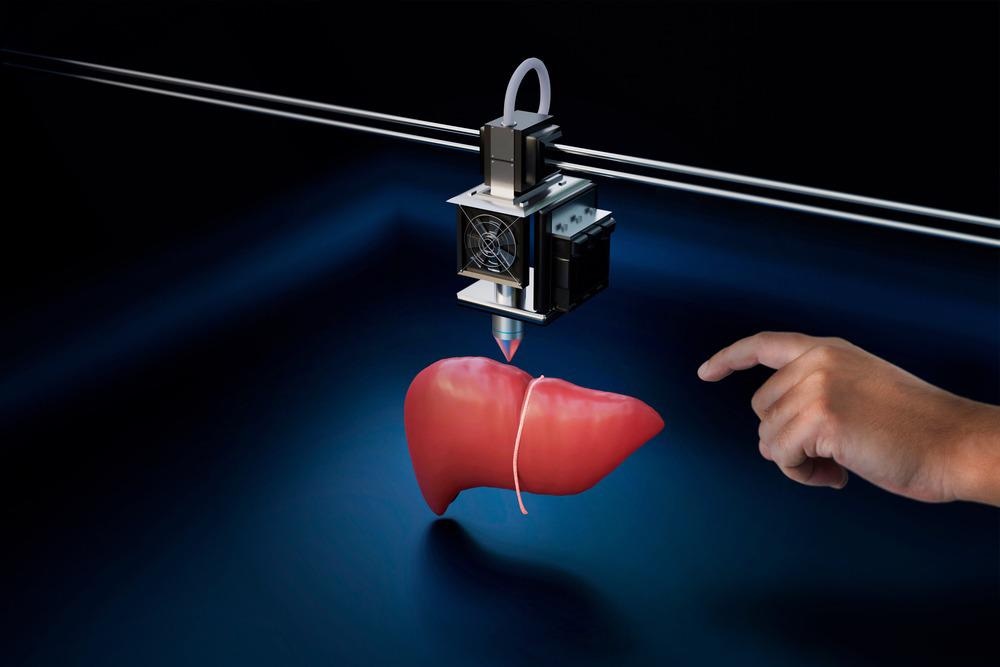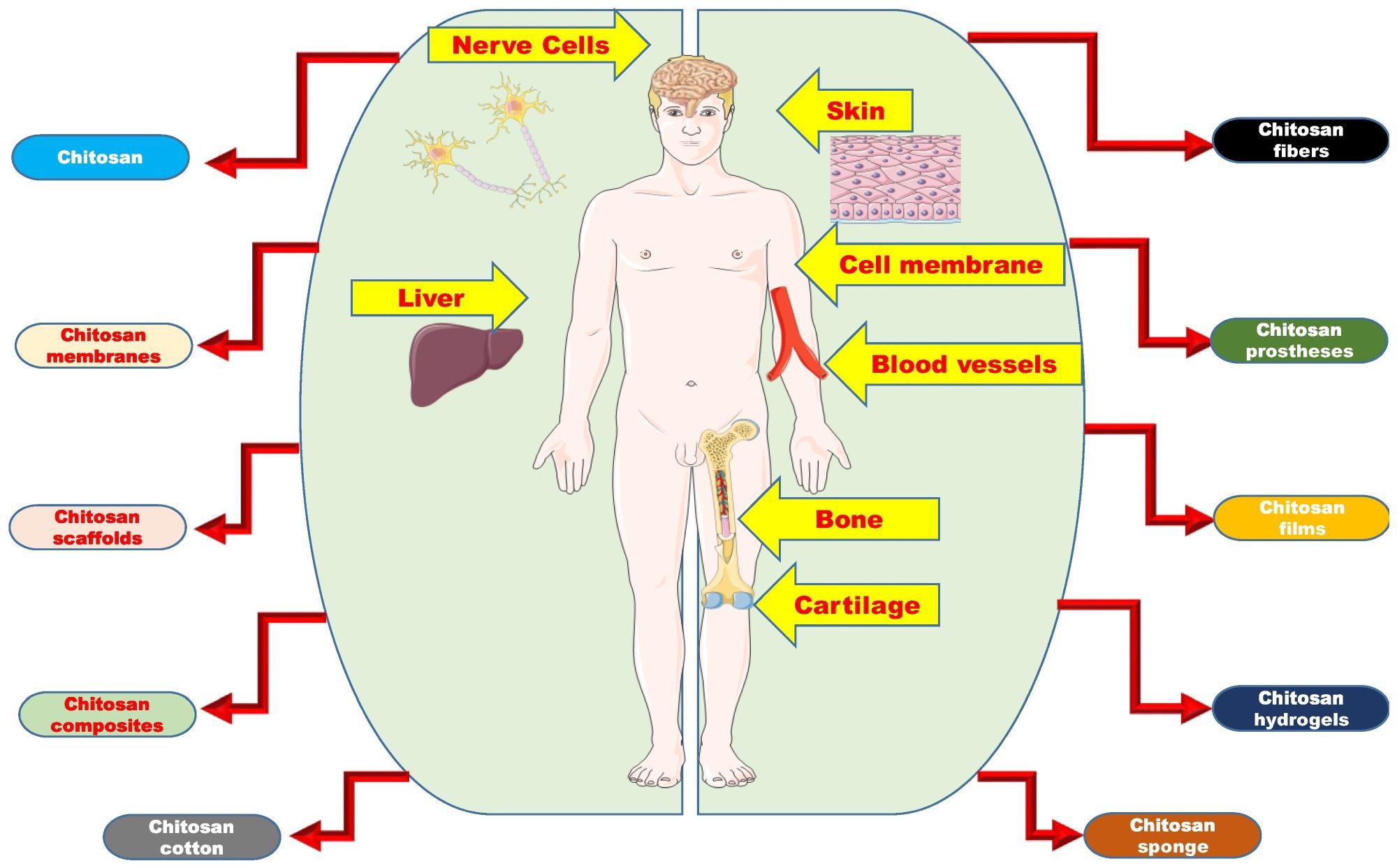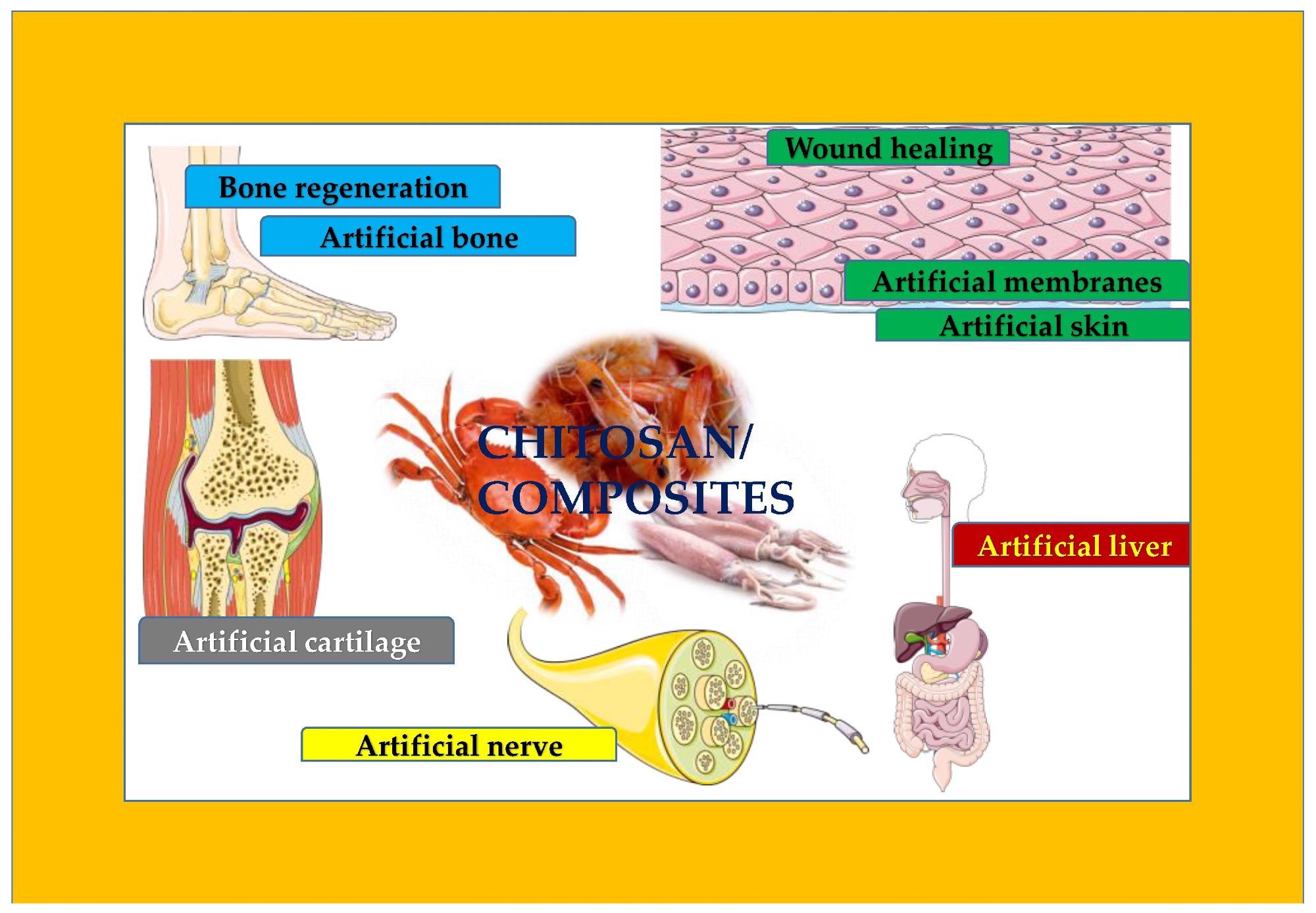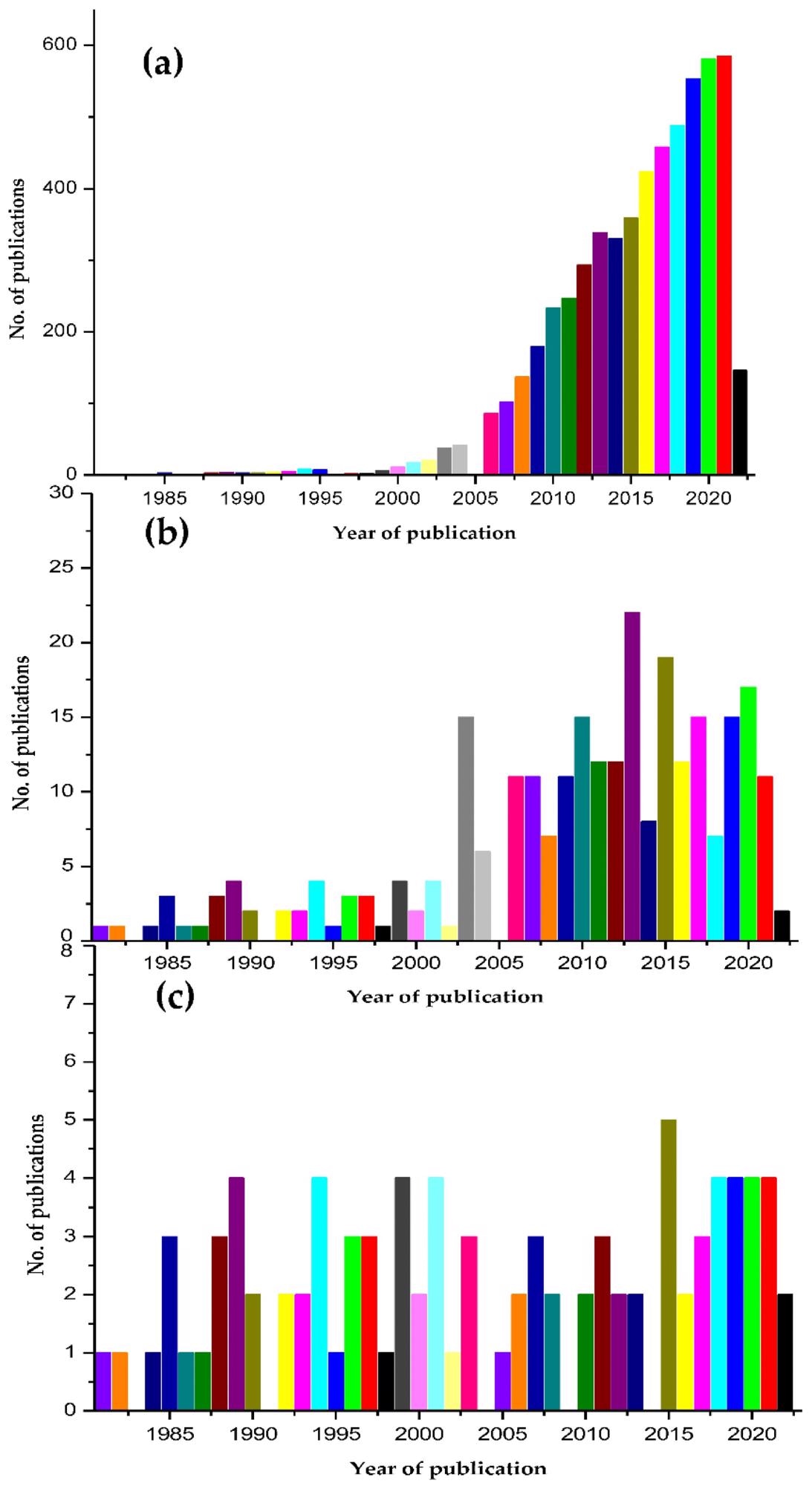 By Surbhi JainReviewed by Susha Cheriyedath, M.Sc.Apr 19 2022
By Surbhi JainReviewed by Susha Cheriyedath, M.Sc.Apr 19 2022In a review recently published in the open-access journal Polymers, researchers discussed the utility of chitosan composites as artificial organs.

Study: Exploring the Impact of Chitosan Composites as Artificial Organs.Image Credit: Gaston Cerliani/Shutterstock.com
Background
After cellulose, chitin is the second most prevalent carbohydrate in nature. The exoskeleton of crustaceans is the primary source of chitin; other insects and microbes are secondary sources. Because of its great biocompatibility, non-toxicity, non-allergenicity, and biodegradability, chitosan is becoming more popular as a biomaterial.
Due to its positive charges, chitosan can interact with the negative component of cell membranes, causing tight junction proteins to reorganize and be increased. In vitro, chitosan is more cytocompatible than chitin.

Overview of the organs to which chitosan and its composites have contributed to and the various chitosan forms that have gone into the making of the artificial organs. Image Credit: Sivanesan, I et al., Polymers
Given the qualities listed above, it's no surprise that chitosan is used in biomedical and pharmaceutical applications. Chitosan has demonstrated biocompatibility within this framework and has been approved by the Food and Drug Administration (FDA) for use in wound dressings.
About the Study
In this study, the authors discussed the numerous biological applications of chitosan. The tissue engineering and biomedical applications-specific synthesis techniques were listed. The results of artificial organ research and tissue regeneration employing chitosan and chitosan composites were also surveyed and presented.
The lack of enthusiasm for chitosan composites and artificial organs, as evidenced by the few publications available online, was underlined, and the causes for this lapse were suggested. In addition, the strategies to increase chitosan and its companions for better usage and exploitation in the production of artificial organs and tissue analogs were discussed.
The researchers discussed many biomedical applications of chitosan as well as the synthesis of biomedical chitosan. The use of chitosan in the development of artificial organs was discussed in detail, and the milestones that were reached in this field were also listed. Furthermore, a comprehensive overview of the existing literature on chitosan composites and artificial organs was provided. The importance of expanding chitosan's applicability in the field of artificial organs was stressed, while focusing on the current state of chitosan in the artificial organ generation field.
Observations
Several methods are used for the synthesis of chitosan-based materials for use in biomedical applications. They include solvent-casting/solvent-evaporation/tape-casting method, compression-molding method, freeze-drying method, electrospinning method, microwave-assisted method, and dense-gas-foaming method. Chitosan is also used in many artificial organs such as artificial membranes, artificial skin, artificial bone, artificial cartilage, artificial liver, artificial nerve, and artificial blood vessel.
Tissue engineering was reported as the foundation for employing artificial implants or laboratory-grown tissues and materials to regenerate broken body parts and restore functioning. Biomedical engineering employed signal molecules, living cells, and scaffolds to develop artificial organs. Many issues must be addressed in diverse implant applications, such as inadequate mechanical property as an artificial alternative, and a suitable delivery strategy for the chitosan-based scaffold, which could enhance biocompatibility, and sterility.

Overview of the areas impacted by chitosan and its composites. Image Credit: Sivanesan, I et al., Polymers
Chitosan and tissue engineering were found to be hot topics, as evidenced by the 4836 publications and reviews found in a PubMed search from 1981 to 2022. On Pubmed, chitosan and artificial organs were ranked 239th, which was a significant drop. Only a handful of reports addressed the topic of chitosan composites with artificial organs.
While chitosan had shown to be beneficial in tissue culture, the state-of-the-art and more advanced forms of chitosan, such as derivatives and composites, were not widely used. Chitosan composites had overcome most of the chitosan's restrictions. The foundation of successful practical implementation was collaborative working. The absence of which could be the cause of a halt in the flow of synthesized products to application platforms. It was discovered that the toxicity of chitosan had not been thoroughly investigated.
The toxicity component of any biomaterial, especially the ones considered for the applications based on artificial organs and those intended to remain in the body for an extended period of time, must be thoroughly clarified. Furthermore, neither chitosan nanoparticles nor chitosan derivatives, which were novel forms of chitosan, had been applied to artificial organs, despite their widespread use in other biomedical fields.

Comparative graph depicting the dearth in publications in the area of chitosan composites and artificial organs based on a pubmed search during the period of 1981–2022. Graph based on pubmed search with keywords (a) chitosan and tissue engineering (b) chitosan and artificial organs (c) chitosan composites and artificial organs. Image Credit: Sivanesan, I et al., Polymers
Conclusions
In conclusion, this study elucidated the use of chitosan in the creation of artificial tissues and organs. It was found that because of its dynamic physicochemical and biological characteristics, chitosan is the most promising biomaterial for tissue engineering.
The authors emphasized that chitosan is a high-potential resource, and exploring the numerous modifications and derivatives accessible will lead to eventual extension into hitherto untapped regions of artificial organs. They also observed that chitosan and its composites have a lot of potential in artificial organ regeneration research and development. They believe that it's a flexible application area with a lot of room for growth if more resourceful chitosan composites and chitosan derivatives are used suitably in artificial organ development.
Disclaimer: The views expressed here are those of the author expressed in their private capacity and do not necessarily represent the views of AZoM.com Limited T/A AZoNetwork the owner and operator of this website. This disclaimer forms part of the Terms and conditions of use of this website.
Source:
Sivanesan, I., Hasan, N., Muthu, M., et al. Exploring the Impact of Chitosan Composites as Artificial Organs. Polymers 14(8) 1587 (2022). https://www.mdpi.com/2073-4360/14/8/1587